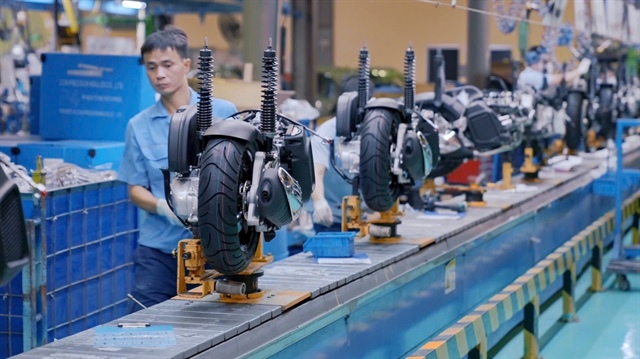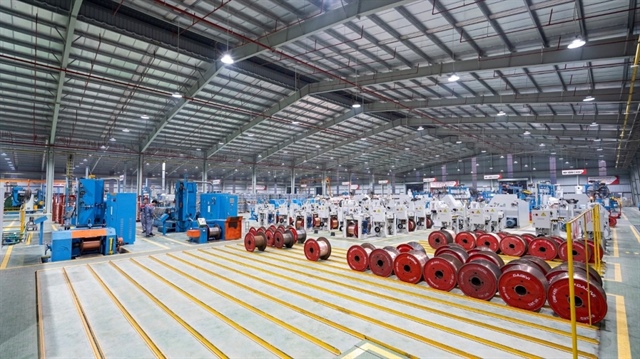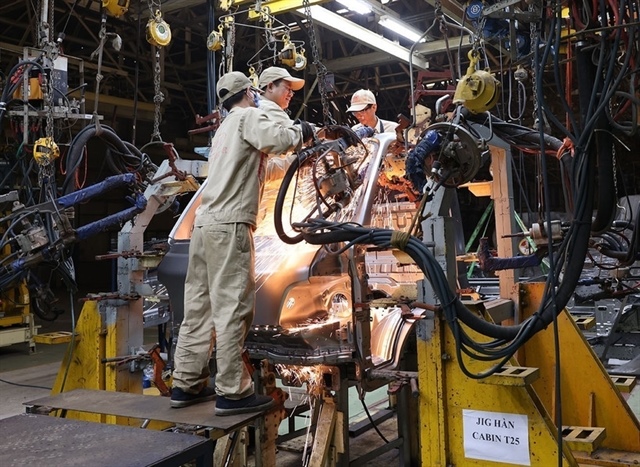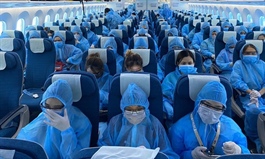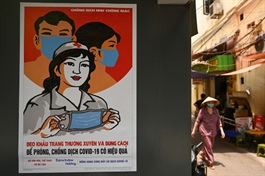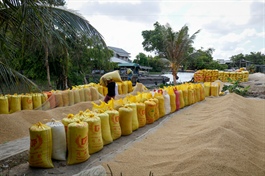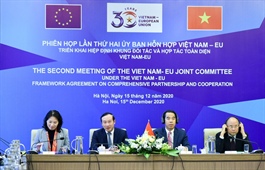Vietnam estimates $15.8 bln budget for airport development
Vietnam estimates $15.8 bln budget for airport development
Vietnam needs VND365.1 trillion ($15.8 billion) to build and expand airports over the next decade, according to the Civil Aviation Authority of Vietnam (CAAV).
A Vietnam Airlines aircraft takes off at Noi Bai Airport in Hanoi, where construction for runway upgrade is going on, July 2020. Photo by VnExpress/Giang Huy.
|
The development projects include construction of the first phase of the Long Thanh International Airport in the southern province of Dong Nai, the Sa Pa Airport in the northern province of Lao Cai and the Quang Tri Airport in the central province of the same name.
A draft plan prepared by the CAAV also includes expansion of some major airports including the Tan Son Nhat International Airport in Ho Chi Minh City, the Noi Bai International Airport in Hanoi, the Da Nang International Airport and the Cam Ranh International Airport.
Some of the top priority projects are the first phase of Long Thanh and expansion of Noi Bai, which are set to cost nearly $5 billion each.
The expansion of Tan Son Nhat, Da Nang and Cam Ranh airports is set to cost over $5 billion in total.
Under the plan, the funding will be sourced from Official Development Assistance loans, state coffers, banks and private companies under the public-private partnership model.
The CAAV has proposed that the government approves low-interest loans, guarantees bank loans and issue favorable tax and land policies to attract private investment in the aviation industry.
Tran Quang Chau, deputy chairman of the Vietnam Association on Aviation Science and Technology (VAAST), said private investment will be a key factor in the development of new airports as the state budget has limitations.
However, there needs to be a legal framework to guarantee investors that they can recoup their investment, especially with the expansion of some major airports like Tan Son Nhat and Noi Bai, which is likely to attract investor interest.
Other experts have expressed concerns about the need for and viability of some airports that could end up making losses over low demand.
Aviation expert Nguyen Thien Tong said that the planned Quang Tri Airport is just 60-80 kilometers away from the existing Phu Bai International Airport in the Thua Thien Hue Province and the Dong Hoi Airport in Quang Binh Province.
Passengers can travel to these nearby airports, potentially reducing demand in Quang Tri and causing an airport there to suffer losses, regardless of private of public investment, he added.
Hoang Van Cuong, a member of the National Assembly’s Financial and Budget Committee, said state coffers should only be used for key sub-projects with national security implications such as construction of runways and land clearance.
The government should seek to attract private investors for other aviation infrastructure projects like as terminals, storage facilities and aprons, he added.
The CAAV also estimates that the country will need another VND866.36 trillion in the 2030-2050 period to develop more aviation projects, including the construction of the second terminal in Hanoi and doubling or tripling the capacity of several other airports.



